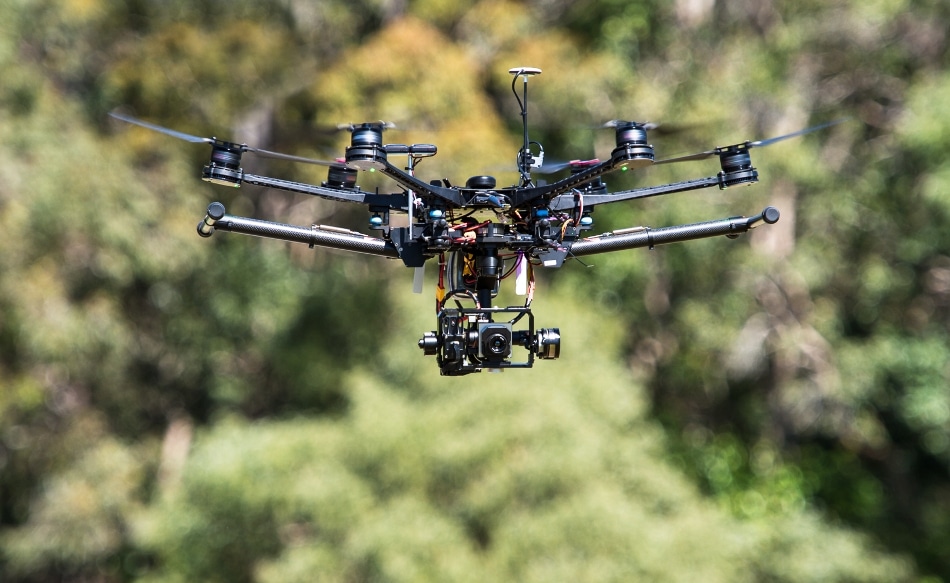Mar 4 2019
Scientists at the Queensland University of Technology have developed a ground-breaking technique for determining koala populations using drones and infrared imaging that is less invasive and more reliable when compared to conventional animal population monitoring methods.
 QUT study shows how drones can be the most reliable method for spotting koalas. (Image credit: Queensland University of Technology)
QUT study shows how drones can be the most reliable method for spotting koalas. (Image credit: Queensland University of Technology)
In the research, reported in Nature journal Scientific Reports, the scientists describe the method in which an algorithm is used for finding the koalas with the help of drones that can detect heat signatures. The method offers great promise in improving management of koala populations and other threatened species as well as being used to detect invasive species.
Dr Grant Hamilton, from QUT’s School of Earth, Environmental and Biological Sciences, co-authored the work with PhD student Evangeline Corcoran and Dr Simon Denman from QUT, and John Hanger and Bree Wilson from Endeavour Veterinary Ecology.
Dr Hamilton stated that the scientists were able to associate the detection of koalas from the air using ground surveys of monitored radio-collared koalas in Petrie, Queensland.
The system can detect the heat signals of the koala even with the canopy coverage of the eucalyptus trees using infrared imaging.
Nobody else has really managed to get good results anywhere in the world in a habitat this complex and in these kinds of numbers.
Dr Grant Hamilton, School of Earth, Environmental and Biological Sciences, QUT.
Other drone-based animal population detection systems have been employed in quite simple scenarios, for example, searching for seals on a beach or animals on the savannah.
“A seal on a beach is a very different thing to a koala in a tree,” stated Dr Hamilton.
“The complexity is part of the science here which is really exciting.”
“This is not just somebody counting animals with a drone, we’ve managed to do it in a very complex environment.”
In order to increase the effectiveness of the method, the scientists conducted their aerial sweeps of the area at early morning in colder months, when the difference between the background and the body heat of the koalas was probably the greatest.
The drone traveled across an area in a “lawnmower” pattern, going up and down over a particular area.
After the flight, the data was entered into an algorithm developed to detect the heat signatures of the koalas compared to other animals in the area.
As the scientists could verify the location of the koalas detected by the drones with the location of the koalas identified through their GPS tags, they were able to validate the precision of the system.
“On average, an expert koala spotter is going to get about 70 percent of koalas in a particular area,” stated Dr Hamilton. “We, on average, get around 86 percent. That’s a substantial increase in accuracy that we need to help protect threatened species.”
“What we previously found was the accuracy was about the same as expert observers.”
“Now we actually know that it’s better.”
Another benefit of animal detection using drones is that it faster, as well as more economical, when compared to scouring the same area with human spotters.
“We cover in a couple of hours what it would take a human all day to do,” stated Dr Hamilton.
However, Dr Hamilton stated that the high rate of accuracy of the drone detection did not imply that other methods of determining koala population, such as by dogs or human spotters, were not needed anymore.
There’s no point talking about it that way because there are places that people can’t go and there are places that drones can’t go. There are advantages and downsides to each one of these techniques, and we need to figure out the best way to put them all together. What we do know now is that this is a really powerful tool within the tool box. Thinking about any one of these approaches as a silver bullet tends to make people complacent—they think the problem has been solved, so let’s move on. Koalas are facing extinction in large areas, and so are many other species and there is no silver bullet. This is a powerful technique in the right circumstances.
Dr Grant Hamilton, School of Earth, Environmental and Biological Sciences, QUT.
After the success of the work, Dr Hamilton stated the scientists were hoping to extend the area where they had examined koala populations and would employ the drone system in other parts of Brisbane, south-east Queensland, and northern New South Wales.
Furthermore, the target would be extended, with the algorithm being modified such that the technology could be used to detect invasive species like deer.